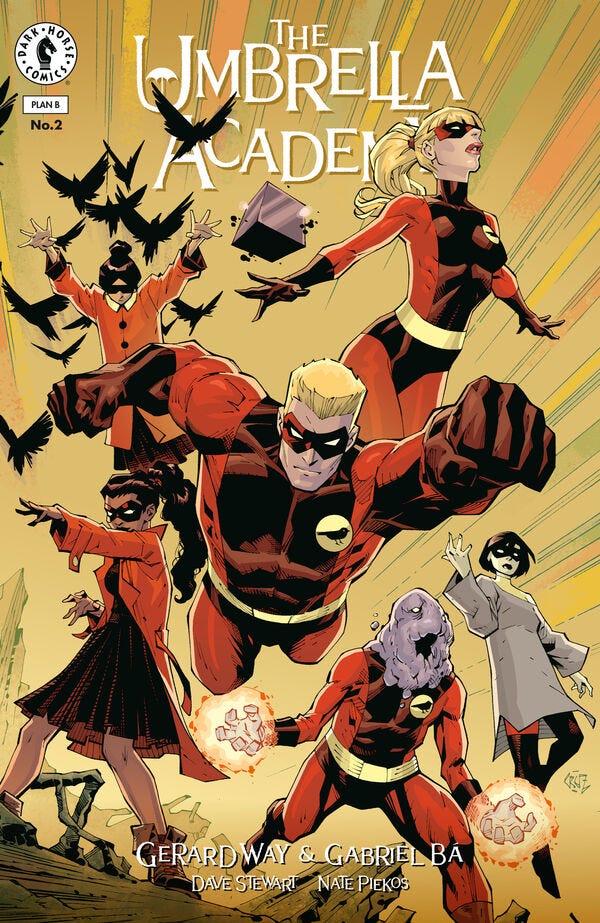I had already enjoyed Good Night and Good Luck when it came out as a movie, even if the particular details of American history escaped me. Maybe by then, and definitely by now, everybody has experienced the importance of how information is transmitted, the dangers of disinformation and how easy we can forget what we knew if we’re bombarded with distorted facts. If, when the movie was released, I came out of the experience remembering how much I admire the journalistic profession, an admiration which only grew by reading Gay Tales novels, and which went on to determine the main character’s job at the beginning of Daytripper, by now, as I watched the Broadway play based on the movie, it made me sad of how far journalism has fallen, how much of it turned into clickbait sensationalism, and how much more in need of good voices who can truly examine the facts and help us reflect on our times we are.
“The fault, dear Brutus, is not in our stars, but in ourselves…”
(I don’t know if this link with the recording of the entire play will remain available for a long time, but it’s well worth the watch at least to analyze the ingenious visual solutions of the play to separate sets and portray tv broadcasting in the story.)
•
Time travel dream come true
Today’s the FOC (Final Order Cutoff, which is the last days for retailers to place their orders of how many copies of that comic they’ll want, which means it’s the last day for you to let your retailer know in advance that you want to buy that comic and guarantee your copy) of Umbrella Academy - Plan B #2. With this issue, Bá got to cross one item off his fanboy list: have a Roger Cruz variant cover.
Back in the early 90’s, when then teenagers Fábio and Bá dreamed of doing comics, but didn’t quite know how yet, the very first wave of Brazilian comic book artists started working for the American market drawing DC and Marvel comics, and here in Brazil this was a newspaper’s worth story. Reading about how it was possible to work from here with the characters you had grown up reading helped us steer our efforts and believe that we could also find our place in the American market. Still, back then, we were much more fans than authors, and beyond anything else we were X-Men fans, so it was specially touching for us to have a Brazilian artist drawing our favorite characters, and that artist was Roger Cruz.
I’m not going into the merits of how, back then, agents who represented the Brazilian artists would demand from their artists to try to alter their own styles and “copy” the style of the most hot artist in the stands. That was then, and if I learned anything by working in comics for more than twenty years, it’s the fact that drawing comics is never easy, specially in a monthly deadline, and that dealing with strange asks from agents and editors only shows your level of proficiency. And, despite all these challenges, Roger had this great dynamic visual style and was able to bring his more alternative influences to his mainstream work.
When Bá realized how much the Sparrows looked like a typical superhero team from the 90s, reaching out to Roger and inviting him to do a cover was the natural path to follow. We’re so glad he said yes.
Issue 2 comes out on August 20th (but remember to let your retailer know today that you want it).
•
Talking about craft
Leading the way of the creator interviews I watched this week (mostly listened to, as I was drawing pages while they played on my laptop, or driving back home while they played on my iPhone), Paul Pope once again leads the way with this long, interesting interview talking about his artistic choices, how to navigate the influences as an aspiring young cartoonist to a seasoned pro, and how he approaches comics as a unique, magical medium.
Looking back, Paul Pope started out around the same time as Roger Cruz, and if you look at Roger’s early alternative work he was doing for the Brazilian market, and watched what kind of comics he was into at the time, you’ll see how both artists had some similarities in the early 90s, trying to infuse their comics with a rock’n’roll aesthetic and a thick European brush line. Since the only path available for Brazilian artists back then (mostly on account of the agents) was working on the mainstream, Roger ended up morphing his style, and it took him years to get back to drawing stories he felt more passionate about.
One of the best differences from that time and the connected internet World we live today is that nowadays artists know there are more paths to follow, more professional option, and we don’t have to copy anybody to find our own way.
“Don’t do what I did”, like Frank Miller told Paul Pope when he was working on Batman Year 100.
Continue a leitura com um teste grátis de 7 dias
Assine Fábio’s Moon Base para continuar lendo esta publicação e obtenha 7 dias de acesso gratuito aos arquivos completos de publicações.





